The advantages of the “Nebo-M” complexes in the anti-missile link of the Russian Aerospace Force of the Russian Federation: irreplaceable assistants of “Voronezh” and “Podletov”
In the XXI century network-centric wars, long-range radar detection of promising tactical fighters of the 5 generation and their inconspicuous missile weapons is considered the fundamental basis for building reliable defensive tactics of both ground and air components of the air forces of any state, including naval naval forces. From 80-x - 90-x. last century, technologically advanced regional and world superpowers are making great efforts to develop mobile high-potential radar systems, as well as highly sensitive systems for electronic intelligence and passive location based on active and passive HEADLIGHTS, as well as ring-shaped HEADLIGHTS with a comprehensive airspace overview. No less important is the early detection of high-speed supersonic and hypersonic air attack weapons with a small radar signature, which include: warhead units of ballistic missiles of different classes, small-sized controlled combat "equipment" of M26 missiles of the Swedish-American MLRS GLSDB (represented by modified small-sized UAB GBU -39SDB) and other precision weapons.
For these purposes, the Russian and Chinese Armed Forces use a whole range of fixed and mobile radar systems with excellent power and transmission capabilities, operating in the meter, decimeter and centimeter wavelength ranges. Stationary systems include: radar missile attack warning systems of the types Voronezh-M, Voronezh-DM, Voronezh-SM (currently only in the project), as well as new Chinese projects of radar stations with unknown numbers. The stations are capable of detecting and accompanying the airborne space elements of the WTO with the 0,1 e2 EPR at distances from 3 to 5 thousand km. The most common Russian stations RTV and Air Defense Opponnik-G, Gamma-С1, Podlet-K1, 96Л6Е and Gamma-DE, as well as Chinese JY-26 and YLC-2V are considered mobile. Radar data are more often used as target targeting tools for long-range radar C-300PX1 / C-400 and C-300B4 and HQ-9, coupled with the latter through the data buses of automated control systems of the 9-CH-CHN-CHN-CHN-CHN-CHN-CHN-XN-XN-X-XNumX-CHN-52-CHN-4-CHN-1-CHN-1-2-59-6-200-1 and X-XNUMX-XNUMX-XNUMX-XNUMX-XNUMX-XNUMX-XNUMX-XNUMX-XNUMX-XNUMX-XNUMX-XNUMX-XNUMX-XNUMX. ". The distinctive abilities of these radars are: fast deployment time, different ranges of operation and unification of universal towers for work on low-altitude targets. For example, the L-band decimeter radar (XNUMX-XNUMX GHz frequency) XNUMXHXNUMXМ “Opponnik-G” is intended for long-range detection and tracking of aerospace objects at altitudes up to XNUMX km (low-orbit segment); the station can issue target designation of an air defense missile system, as well as more accurate centimeter radar stations of the combat mode of the Gamma-СXNUMX type. The latter may well be adapted to the tasks of target designation and illumination of anti-aircraft missiles with ARGSN and PARGSN.
The 48Я6-К1 “Podlet-K1” station can be considered as a radically improved low-altitude detector 76Н6. The target detection ceiling is only 10000 m, and the range is 300 km. At the same time, a solid-state PFAR operating in the centimeter X-band makes it possible not only to accompany on the aisle, but also to capture low-altitude cruise missiles with a small radar signature. Despite the possibilities of working on ballistic objects, the elevation viewing range from -2 to + 25 hail indicates that the station is “sharpened” for locating and ensuring the launch of the missile defense system exclusively for low-altitude targets. In other words, “Plyot-K1” is the only one of a kind multifunctional low-altitude radar, which has no analogues in the world. As for the maximum speed of the objects being followed, 49Я6-К1 has the limitation in 1200 m / s for this parameter (for hypersonic EHV with speeds ≥5М “Approach” does not work). Radar "Opponnik-G" has a speed limit of tracking 2200 m / s. But unlike “Podlyota-KHNUMX”, it works in the DM-range and does not allow auto-capturing of air targets with an accuracy of three to five tens of meters.
The radar complex, which complements the “Flying-K1” on the stratospheric and exoatmospheric parts of space, is the 96ЛЛNNXXЕ high-altitude detector. This complex is used as the main target targeting means in the divisional link of the C-6PS / PM300 and C-1 “Triumph” air defense missile systems and has the highest tactical and technical characteristics. The BBO 400Л96Е has an upper limit of the detection zone - more than 6 km, has a maximum speed of the accompanying target - 100 km / h, and is also capable of tracking air targets from the EPR to 10000 м100 at a distance of 5 km on the 2 aisle. It is worth noting that the BBO 400L96E, which has a multi-beam antenna array, shows very flexible hardware capabilities for the formation of a radiation pattern in the elevation plane, and therefore is capable of interchanging Podlyot-KHNUMX in the tasks of detecting low-altitude air targets.
Chinese standby radars also keep up with domestic products. And the most interesting model from the Celestial is the radar JY-26 radar detection. For the first time, the station was presented at the International Aerospace Exhibition in Zhuhai in 2014, and a year later all the Western press and the Internet exploded with scandalous reports about the detection of subtle F-22A fighters over South Korea with radar data. The Raptors were deployed to Osan South Korean air base in the spring of 2013 to demonstrate support for Seoul in disagreements with Pyongyang on the Korean People’s Democratic Republic’s nuclear missile program, as well as in the framework of the US-South Korean teachings Fool Eagle (Foal Eagle) .
F-22A Raptor Detection by Chinese JY-26 Radars - news for the West, really stunning, because even with the placement of JY-26 on the eastern tip of Shandong province (issued 300 km into the Yellow Sea), F-22A were discovered at a distance of 250-300 km. After all, it is well known that “Raptors”, possessing EPR within 0,07 and 2, can be detected by modern ground-based radars of radio-technical troops at a distance of no more than 120-150 km. American and British experts say that the JY-26 operates in the meter and decimeter bands (VHF / UHF- from 136 to 512 MHz), which gives quite good advantages in detecting long-range small targets due to better propagation of low-frequency waves in the airspace. But a large role is still fulfilled by the high energy potential distributed between the 512 receiving-transmitting modules of the active phased array of the JY-26 station. If we are guided by such long-range indicators, it can be argued that a fighter-type target with 3 m2 EPR can be detected at a distance from 600 to 750 km. For comparison, even the domestic radar detector of the meter range with the 55Ж6U "Sky-U" is able to detect a target with a similar radar signature at a distance of no more than 420 km, and this with a pulse power of 500 kW. From this it follows that JY-26 should have a pulse power of more than 800 kW.
Other radio technical anti-stealth means can be considered passive electronic intelligence stations. One of the best domestic RTR stations and passive locations is Valeria. Equipped with a passive annular phased array antenna, the antenna post, which rises on a telescopic tower to a height of 20-25 m, makes it possible to locate near and distant radio-emitting air objects at distances up to 500 km and altitudes from the earth's surface up to 40 km. Due to the fixed ring antenna array, the rate of updating information on radio-emitting targets does not exceed half a second, which is an advantage over standard rotating radars. SRTR "Valeria" operates in the meter, decimeter, centimeter and millimeter wave ranges, which allows the location of radio sources of the UHF / VHF bands, airborne tactical and strategic radars aviation (including those operating in the broadband mode of "low interception capability" of LPI and frequency hopping), radio altimeters of tactical and strategic cruise missiles, as well as active homing radar heads without revealing their own coordinates. “Valeria” will easily detect the radiation of the airborne radar AN / APG-77 and AN / APG-81 (installed on the F-22A and F-35A / B / C) in any operating mode, as well as record the radiation of their airborne tactical information exchange modules on channels "Link-16" JTIDS and IFDL.
DWL-002 is a similar Chinese electronic reconnaissance and passive location station. Information about the product appeared in May 2014, after participating in the 9th international exhibition of military electronics (CIDEX-2014). The Chinese analogue, like the Valeria SRTR, has the highest sensitivity to even the weakest radiation sources, which allows bearing not only air targets with operating radar facilities, but also in complete radio silence. How does this happen? In addition to the radiation of powerful surveillance and multifunctional radars of radio technical troops and air defense troops, an enemy aircraft can irradiate a huge number of other radiation sources, which are meteorological radars, mobile GSM towers of the decimeter range, etc. The radiation from them is reflected according to the principle of any other radio signal, and will certainly be fixed by the DWL-002 passive antenna. Thus, not a single air target will pass unnoticed near the Valeria or DWL-002 antenna post, but with the difference that it will be detected from a much closer distance than with the on-board radar.
As is known, passive location stations, in contrast to active radars, are usually represented by several antenna posts located on the ground, which operate in the meter, decimeter and centimeter ranges. Such a configuration implies an accurate determination of the coordinates of enemy radio-emitting objects when it is not possible to use the standard impulse method for determining the distance to an air object, which is used by standard radars. This method is called differential distance measuring. At least 3-x separated passive antennas are required to calculate two values of the difference between the distances between each post and the target (by the difference between the arrival times of the signal), as well as determine the point of intersection of the hyperbolas of the obtained differences of time with the spatial locations of the passive antennas. A similar method is also used in the Kolchuga-M passive reconnaissance station.
Despite the numerous advantages of all the above-mentioned means of electronic and electronic reconnaissance, they are able to give a warning time before approaching numerous ultra-small hypersonic high-precision elements weapons (6-7М speed) total 1,5 - 2 minutes, which is extremely insufficient for timely bringing into combat readiness of all, operating in the network-centric alignment, anti-aircraft missile brigades of the VKS and divisions of military air defense. Additional mobile radar facilities with significantly higher energy qualities are needed, which would allow the anti-missile link in a certain section of the theater to notify the 7 fly-by-flight aircraft for 4-5 minutes before they are approached.
This is not equal to the promising multi-element interspecific radar complex 55ЖХNUMXМ "Nebo-M", combining the qualities of SPRN, DRLO, as well as the targeting radar for anti-aircraft missile units. According to the source in the Russian Ministry of Defense, during the 6 year, 2016 X-NUMX radar systems "Nebo-M" were transferred to the Air and Space Forces. The first sets began to arrive in the Air Force from the end of 5 year. Thus, as of 2012, PTB has more than 2017 Sky-M kits. The complexes are in service with the RTV units in the Eastern and Western military districts.
Having passed the ground tests in 2009, the sky-M radar complex was successfully sent to state tests, but not fully equipped. Only the meter-long radar module RLM-M, the UHF - RLM-D, and the control cabin of the KU RLK were completely ready; The centimeter RLM-S module was then at the level of a draft design. But even in such a composition, “Sky-M” was distinguished by unique parameters in its class. Due to the high energy parameters of the meter and decimeter modules, even in the overview mode, the target detection range with the 1 2 EPR reached 550 - 600 km, which was a record figure among all modern radar-DRLOs. RLM-D (as a single element) belongs to the most powerful mobile radar of the decimeter range, and, similarly to other modules of the Nebo-M complex, is equipped with its own 100 kW power generator. The module is represented by a multi-element solid-state AFAR with a phase shifter built into each MRP: such a step makes it possible to use the station both in the circular scan mode and in the sector view mode for more careful and long-term observation of the missile-hazardous direction.
The sectoral mode of operation is characterized by an even higher impulse power of radar modules, which made it possible to bring the instrumental range to 1800 km: at such a distance, "Sky-M" is able to detect launching operational-tactical ballistic missiles and medium-range ballistic missiles. The speed limit of detectable and tracking targets reached 5000 m / s. The target with 0,1 m2 EPR (combat unit MRBD or OTBR) can be detected at a distance of 600-650 km, and 0,01 m2 - 300-350 km. Thus, the Nebo-M complex is a record-breaker both in multifunctionality and in the parameters of early target designation (2-5 min) for the C-300B4 and C-400 "Triumph" linked to the EKO system.
DOES THE SKY-M COMPLEX ARE DEMANDED DUE TO THE SATURATION OF THE EKR OF THE RUSSIAN FEDERATION OF HIGH-FACTORY READINESS OF THE FAMILY OF THE FAMILY 77YA6 VORONEZH?
The long-term warning system (EWS) troops aerospace defense Russia today is based on the high-potential meter 77YA6 radar "Voronezh-M", their upgraded versions 77YA6-VP "Voronezh-VP" and UHF versions 77YA6-DM "Voronezh- DM ". Stations of this family are built on the basis of light modular elements of block-container composition; and, unlike such giant structures as the Daryal-U radar, the installation of all necessary elements usually takes no more than 18 - 24 months. From the moment of the accession, in February of 2012, to the combat duty of the Voronezh-M station in the village of Lekhtusi, Leningrad Region, the East-Kazakhstan region received 7-like radars. This year it is planned to launch 2 Voronezh-DM in Yeniseisk and Barnaul, and also Voronezh-VP 1 station in Orsk. The network of 7 stations has formed around Russia a rather dense radar field at all rocket-hazardous air directions at distances 4200 - 6000 km and altitudes from 150 to 4000 and 8000 km. The survey sectors of Voronezh stations in the European part of Russia overlap, which excludes the presence of overlooked “gaps” in the southwestern, western and northwestern air directions, and the record capacity of each Voronezh radar in 500 targets allows you to maintain control over the tactical situation even at the time of a massive strike by means of an aerospace attack of the enemy. But this concerns only exoatmospheric hypersonic armament, since the lower limit of the field of view for 77YA6 is about 100 km. All aircraft operating at altitudes up to 50-70 km are not included in the Voronezh target list.
You can not neglect the issue of radio horizon. Even if 77X6-DM were adapted to work on low-altitude and medium-altitude targets (from 15 to 20 km), the radio horizon would be just 400-550 km for them, which does not give stationary Voronezh any advantage over advanced Mobile sky-lasers like "Sky-M". In other words, the Nebo-M radar complex is the only mobile electronic reconnaissance device capable of performing SPRN functions for low-altitude and medium-altitude “equipment” of supersonic or hypersonic rockets and aircraft, while providing a decent time for warning of approach, as well as the ability to quickly transfer on one or another part of the rocket-hazardous VN. Are there many similar directions in our state? Not so much, but still there are!
Firstly, this is the northeast air direction (VN), which has always been one of the weakest points of our aerospace defense. In this direction, the meter radar SPRN "Daryal-U". Like any other radar station, Daryal station has significant energy losses along the edges of the scanning sector, which means a loss of range, and the right edge of the radiation pattern (NF) just approximately covers the northern aerospace boundaries above the Laptev Sea, East -Siberian and Kara seas. It turns out that the sky over the northern parts of Siberia and Yakutia is practically not seen by the Pechorsky “Daryal”, and before being introduced into the “anti-missile unit” of the Voronezh-VP radar station in Vorkuta (with the sector of the review increased to 120 degrees), it still remains 2 of the year.
In such a situation, the 3-x “Sky-M” radar systems along the northern seas washing the Russian Federation can be an excellent solution. The first can be deployed near Norilsk. The second, in the vicinity of Tiksi: here it will serve not only as the radar of anti-ship missile systems and early warning of the northern air borders of our country, but also to act as a means of early warning and target designation for the anti-aircraft missile brigade and air defense, covering the main air base of the "Arctic forces" "Tiksi". As you know, this year Tiksi will gradually begin to turn into a strategically important air harbor of the Russian Aerospace Forces in the northern strategic direction. This AvB can also be deployed by the Tu-160 strategic missile-carrying bombers and the Tu-22М3 medium-range missile carriers. It is more expedient to deploy the third in the vicinity of Anadyr. First, a squadron or a MiG-31BM air regiment will also be stationed there; secondly, the sectoral mode of operation of the Sky-M complex will be able to cover the aerospace sector above the strategically important hub of the US Air Force - the united airbase Elmendorf-Richardson (Alaska), where tactical and strategic aircraft with hypersonic WTO can be placed .
The second very unpredictable air direction, where the Sky-M complex can be claimed, is the south-west high-voltage line. In this area, there is a particularly high activity of tactical and strategic reconnaissance aircraft of the US Air Force based on Turkish and Arabian air bases, and in the future, tests will be more often carried out on Turkish operational tactical ballistic missiles of the Yildirim family. This is the ever-growing military threat from Georgia, which plans to deploy a large contingent of NATO forces in the military base of Vaziani consisting of armored units and several batteries of the Patriot PAC-3 or SAMP-T complexes.
In addition, it is known that the commands of the US and British Armed Forces usually reinforce their ground contingent with promising modifications of the GMLRS multiple launch rocket systems, which are equipped with M30 and XM30 guided missiles with a range of up to 70-95 km. A similar decision was already made last year to strengthen the grouping of the British Ground Forces sent to Estonia. In addition to the BMP MCW-80 "Warrior", MBT "Challenger-2", shock drones MQ-9 "Reaper", as well as a contingent of a reinforced battalion (800 people), London will send M270A1 MLRS launchers to this Baltic country. Guided projectiles with a caliber of 227 mm pose a serious threat to the units of the Russian Army in the border regions of Leningrad and Pskov. They are no less dangerous than OTBR ATACMS; primarily due to the small radar signature of 0,04 m2. The Gamma-S1 radar station will be able to detect such projectiles at a distance of about 100 km, the Nebo-M complex at a distance of 200-250 km in sector mode and about 160 km in all-round mode. As a detector of small targets, Nebo-M is many times ahead of the Israeli EL / M-2084 radar of the Iron Dome complex.
Returning to the south-western VN, it is worth noting that it is very logical to deploy the Sky-M RLC at the 102 military base in Gyumri. Here, it will be a worthy response to the Israeli Green Pine station acquired by Azerbaijan, as well as be able to control huge areas of airspace over Turkey, Iraq, Syria and Georgia. Any unauthorized tactical actions of NATO and Israel in the Middle East will be immediately recorded in the control room of the KU RLK complex.
The most important distinctive feature of the Sky-M RLC on the background of various standby radars is also the possibility of detecting exoatmospheric targets at an altitude of 1200 km, which is 6 times higher than that of the Opposnik-G radar. An advanced radar concept with pronounced anti-missile qualities, capable of detecting, accompanying and even capturing medium-range ballistic missiles outside the Earth’s atmosphere, is on the face. And despite all the emphasis made today on the creation and promotion of standard surveillance or multifunctional radars with a range of 300-400 km, the PTB units will no longer be able to do without such complexes as Nebo-M. After all, progress in the design of hypersonic elements of the WTO sooner or later will impose more severe rules of warfare.
Information sources:
http://forum.militaryparitet.com/viewtopic.php?id=12519
http://militaryrussia.ru/blog/topic-690.html
http://militaryrussia.ru/blog/topic-872.html
http://militaryrussia.ru/blog/topic-610.html
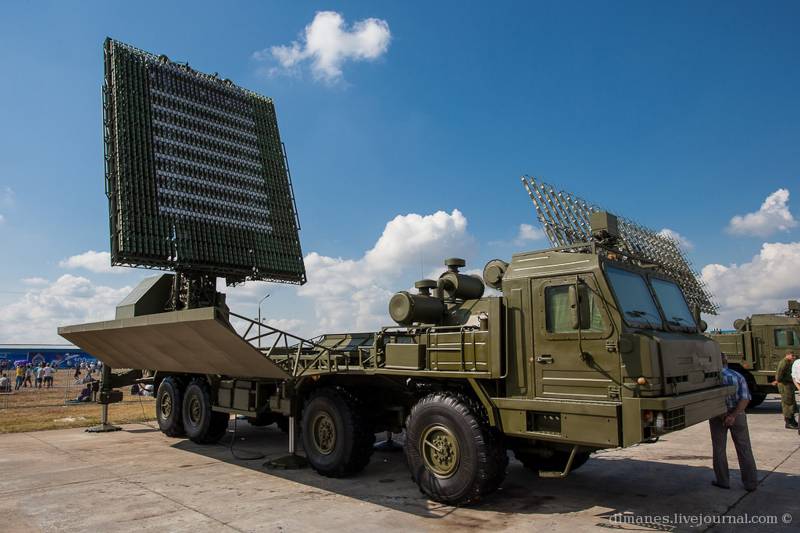
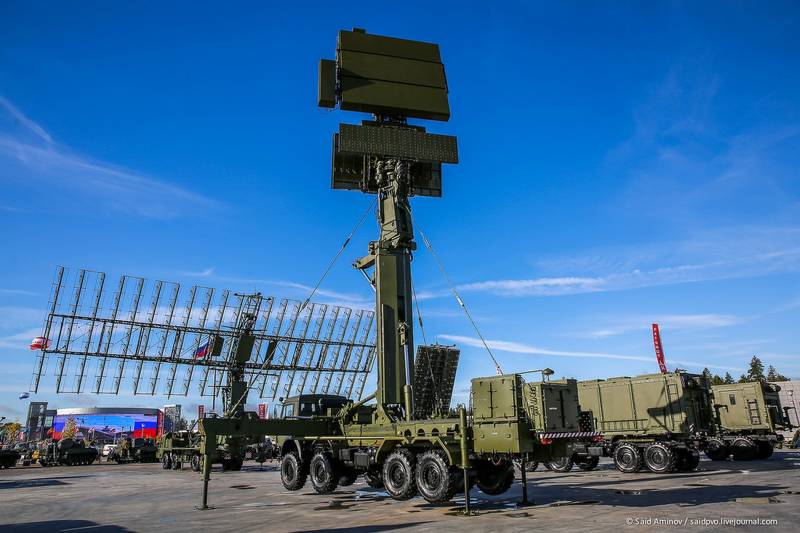
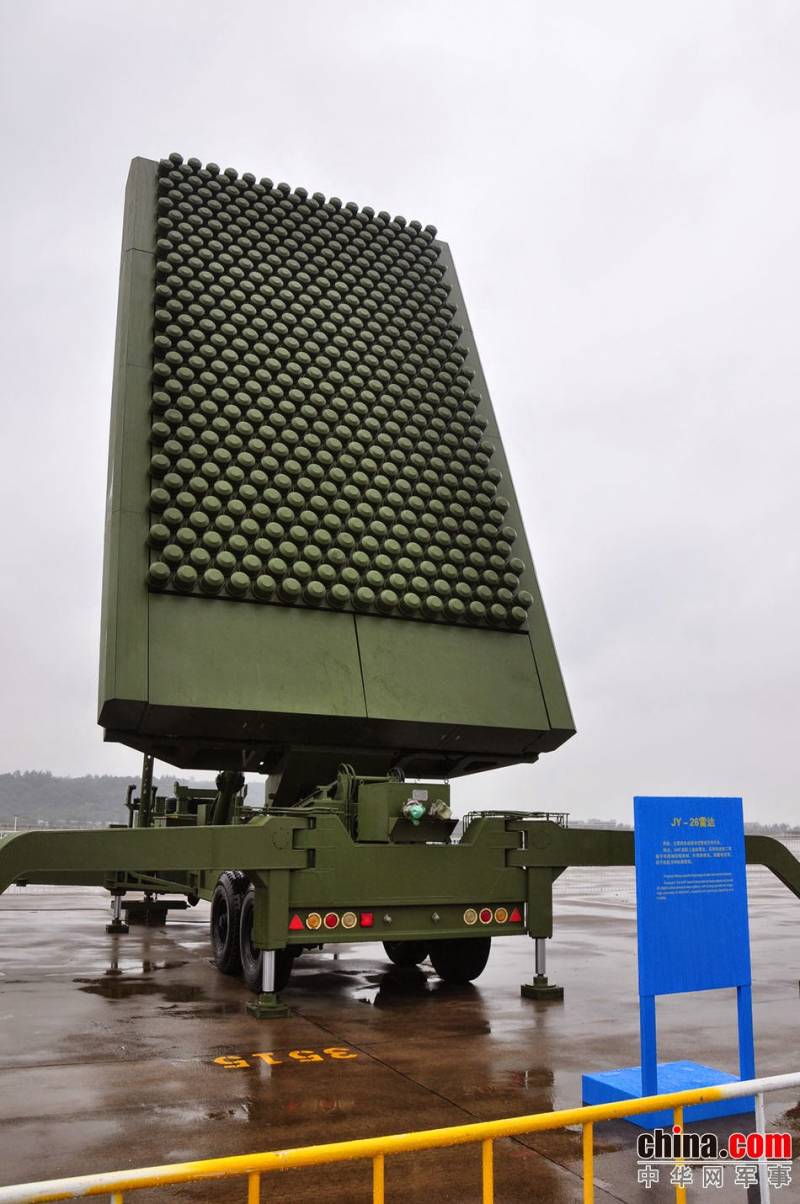
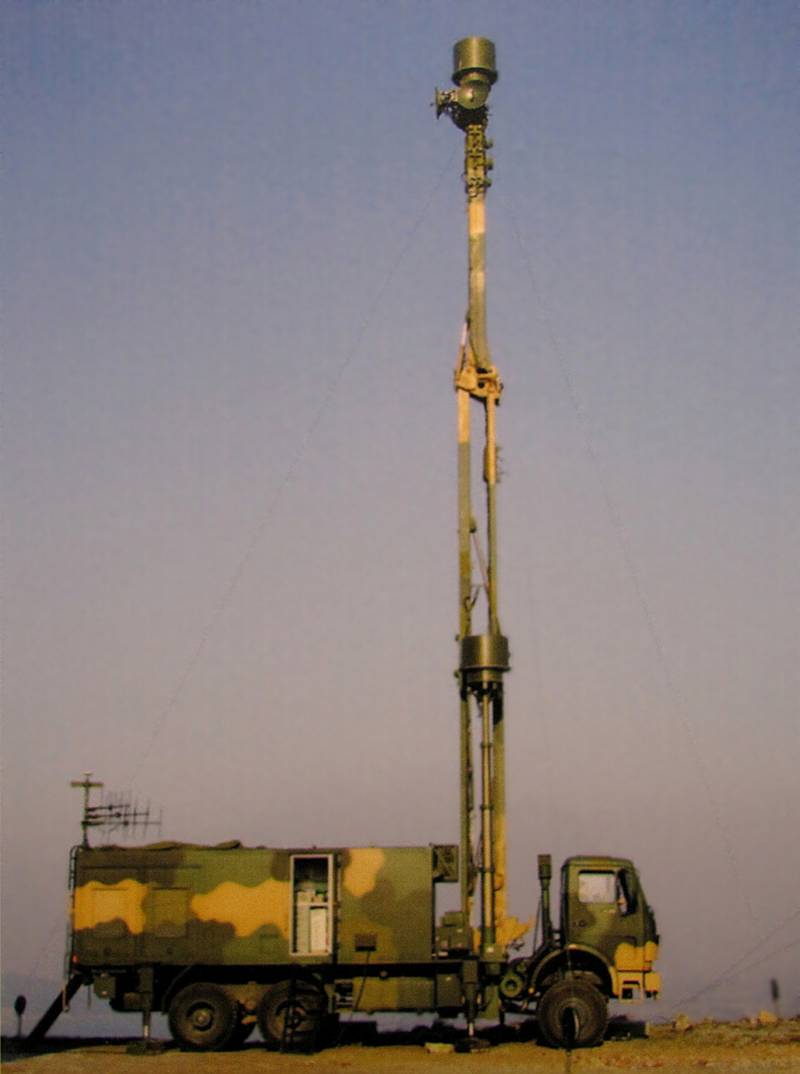
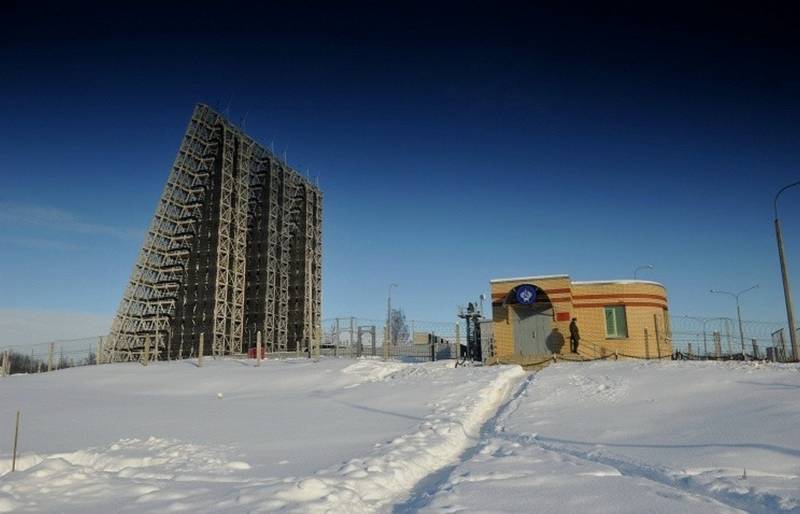
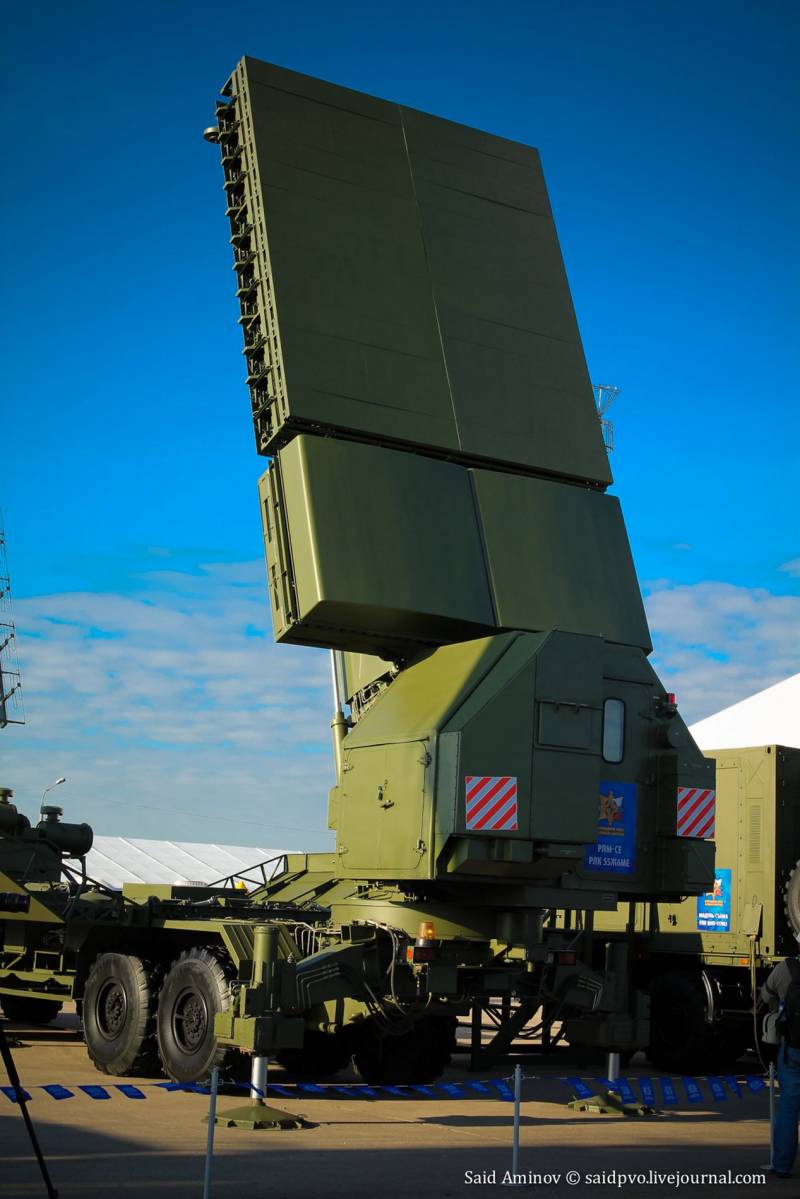
Information